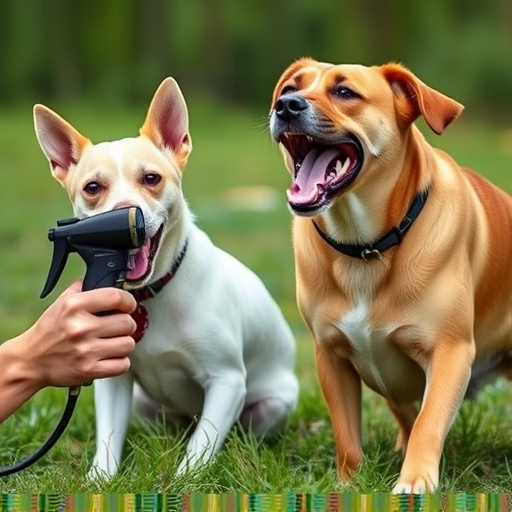The legal framework governing animal control spray, like pepper spray and mace, varies by region, focusing on product purpose, potency, and safety. For dog defense, the best Mace concentration typically ranges from 2% to 6% capsaicin, effective in irritating dogs without excessive harm. Users should select products tailored to their needs while adhering to local laws. Proper training is crucial for safe and effective use, treating it as a last resort against aggressive animals. Professional courses offer hands-on experience in handling and spraying techniques, emphasizing responsible use.
Animal control spray, also known as pepper spray for dogs, is a controversial yet legally available self-defense tool. With varying regulations across regions, understanding the legal frameworks surrounding its use is crucial. This article guides you through the intricacies of animal control spray, from choosing the best mace concentration for dog defense to safe application and training. We’ll explore factors to consider, ensuring effective and responsible usage in compliance with local laws.
- Understanding Legal Frameworks: Unraveling Regulations on Animal Control Spray
- Choosing the Right Mace: Factors to Consider for Dog Defense
- Safe Application and Training: Ensuring Effective Use of Animal Control Spray
Understanding Legal Frameworks: Unraveling Regulations on Animal Control Spray
Understanding Legal Frameworks: Unraveling Regulations on Animal Control Spray
The legal landscape surrounding animal control spray varies significantly across regions, with each jurisdiction establishing its own guidelines and restrictions. It’s crucial for users to familiarize themselves with local laws before employing such sprays to ensure compliance and safety. The regulations typically focus on the purpose, potency, and permissible uses of the product, especially concerning the protection of both animals and humans. For instance, many areas have specific restrictions on the minimum age and training requirements for individuals carrying and using animal control spray, often referredring to as pepper spray or mace.
When it comes to dog defense, understanding the best Mace concentration is key. High-quality animal control sprays designed for canine deterrence usually contain capsaicin, the active ingredient responsible for the burning sensation. Concentrations can range from 2% to 10%, with higher concentrations offering more potent protection. However, stronger sprays may also come with increased risk and potential side effects, highlighting the importance of selecting a product tailored to the user’s specific needs while adhering to local legal frameworks.
Choosing the Right Mace: Factors to Consider for Dog Defense
When selecting a mace for dog defense, understanding the best mace concentration is paramount. The primary consideration is the active ingredient, capsaicin, which irritates the animal’s eyes and nasal passages. Look for products with concentrations ranging from 2% to 6%, as these are effective yet less likely to cause harm to humans or other pets if accidentally deployed. Higher concentrations, over 10%, are typically reserved for professional use due to their potency.
Additionally, consider the size and reach of the mace. Handheld options offer quick deployment but may have limited range. Larger canisters provide better coverage but require a bit more strength to operate. For dog defense, a mid-size option that offers both ease of use and sufficient range is often ideal. Always check local laws and regulations regarding the ownership and use of mace to ensure you’re adhering to legal guidelines.
Safe Application and Training: Ensuring Effective Use of Animal Control Spray
The safe application and proper training are paramount to ensure effective use of animal control spray, also known as pepper spray or mace. It’s crucial to understand that this self-defense tool should only be employed as a last resort when facing aggressive dogs or other animals that pose an immediate threat. Before using any animal control spray, individuals must undergo adequate training to comprehend the product’s working mechanism, safety precautions, and legal restrictions in their respective regions.
Training sessions should cover topics like understanding different dog behaviors, identifying trigger points, and learning the correct spraying technique for optimal effect with minimal harm. Knowing the best mace concentration for dog defense is essential; using too much can cause unnecessary suffering, while an insufficient dose may be ineffective. Professional training courses often include demonstrations and hands-on practice to ensure users are prepared to handle unexpected encounters responsibly and safely.
Animal control spray, when used legally and responsibly, can serve as a crucial tool for personal safety, especially when dealing with aggressive dogs. By understanding the legal frameworks governing its use and selecting the best mace with the appropriate concentration for dog defense, individuals can ensure their safety while adhering to relevant regulations. Proper training on safe application is essential to minimize risks and maximize effectiveness in real-life scenarios.
